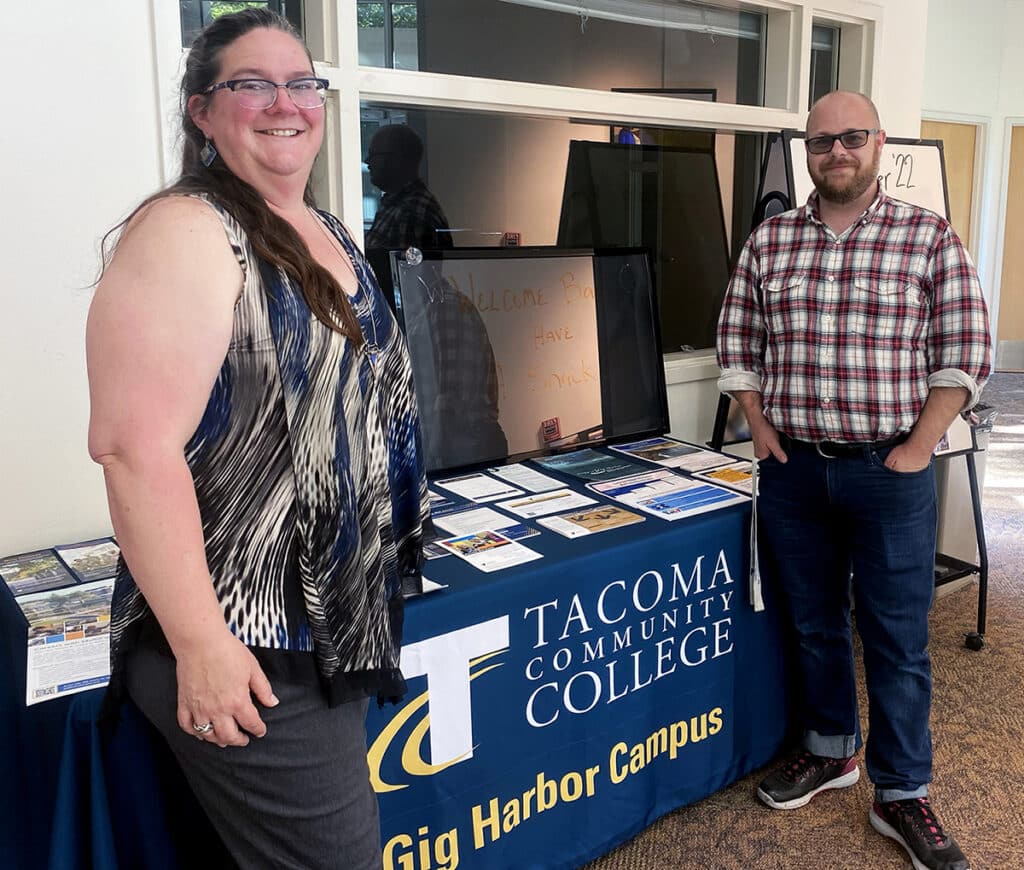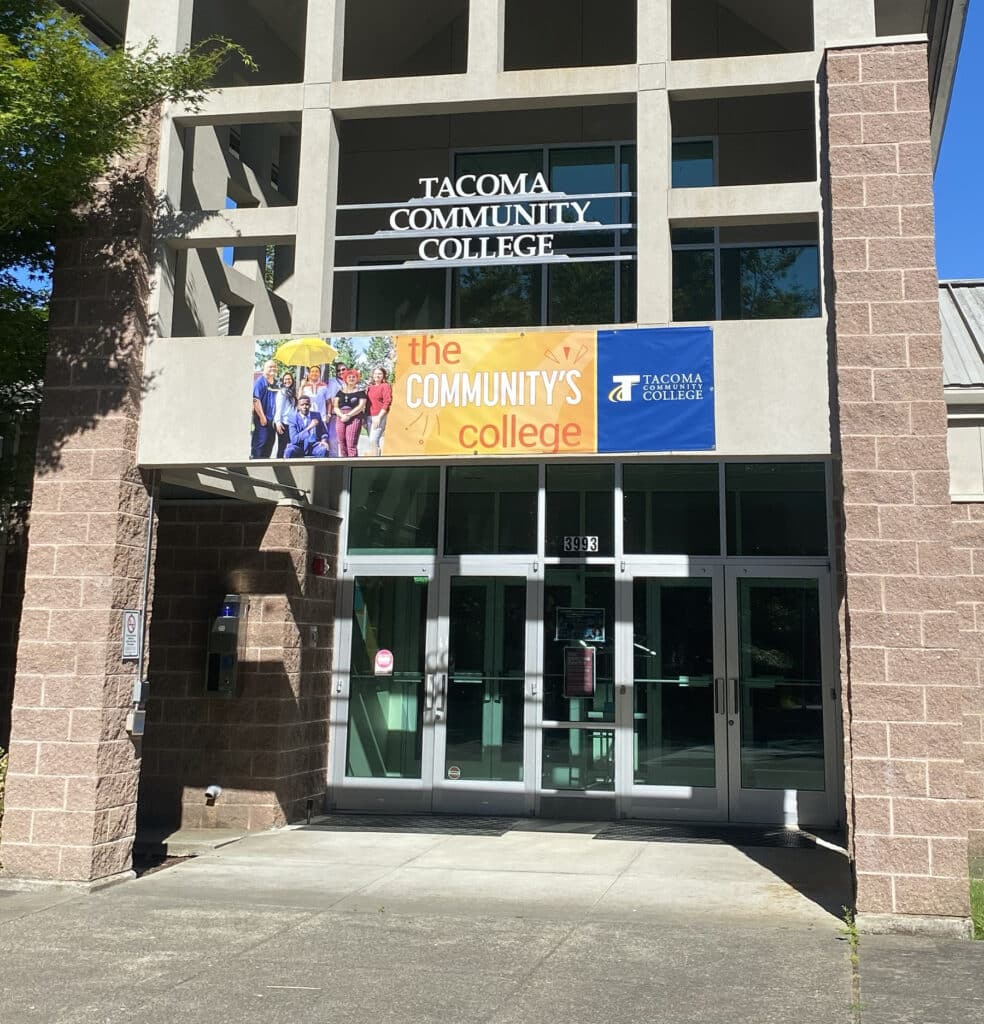Community Education
Tacoma Community College brings ESL program to this side of the bridge
Tacoma Community College has long had an English as a Second Language program for adults seeking to improve their fluency in reading, writing and speaking English. But until this year, residents of Gig Harbor and the Key Peninsula had to cross the Tacoma Narrows Bridge to access classes.
Word of a growing need for ESL instruction began trickling in to Olga Inglebritson, dean of TCC’s Gig Harbor Campus & Continuing Education, couple of years ago.
Peninsula School District’s English Language Learner population was growing exponentially, she heard. That suggested a corresponding need among adults. She heard the same from St. John’s Episcopal Church, which offered tutoring to non-native speakers.
First classes launched in January
Although TCC administrators were receptive to launching ESL north of the narrows, the COVID-19 pandemic pushed plans to the back burner.
In December, however, Inglebritson and others working in TCC’s Adult Basic Education division decided to move forward. Two information sessions — one at Evergreen Elementary, one at TCC Gig Harbor — drew more interest than they had expected.

Rebecca Jayasundara, Tacoma Community College’s Adult Basic Education Director, and Shawn Story, ESL Pathways Navigator, have been key staff members in launching English as a Second Language classes at TCC’s Gig Harbor Campus. The new program fills a growing need in Gig Harbor and on the Key Peninsula.
The first classes launched in January, despite a surge in COVID cases and a busted boiler that temporarily affected heat in the building.
Inglebritson stumped for in-person classes, even though most courses at the Gig Harbor campus were still remote then.
“And it made a huge difference. It made such a huge difference for those families,” Inglebritson said. “They came in with their masks and they social distanced. They were so excited to be in the building.”
ESL students that first quarter totaled 18. Thirty registered for summer quarter. Inglebritson expects the demand to keep building as word spreads through the network of community partners that support the local non-native English-speaking population.
Six levels of instruction
The ESL program at TCC Gig Harbor has three components. “Integrated” classes cover listening, speaking, reading and writing. Those are held via Zoom four evenings a week.
A twice-weekly “immersion” class (one evening of which is in-person) focuses on listening and speaking. The final component involves computer literacy instruction.
Students can come to the TCC Gig Harbor campus to access computers or they can check out a laptop and a hotspot. Peninsula School District partners with TCC to get families connected.
“And our goal is to expand that in the fall, to see if we can get more families who live out on KP (the Key Peninsula) to be able to participate without the transportation challenges,” said Rebecca Jayasundara, TCC’s Adult Basic Education director.
Six levels of instruction are offered, with levels 3-4 and 5-6 taught in the same class. Students can repeat levels for as long as they need to gain proficiency.
A diverse group of students
The students in TCC’s ESL program both in Tacoma and Gig Harbor are an ethnically and culturally diverse group.
The majority are native Spanish speakers, originally from countries like Mexico, Guatemala and Honduras. Vietnamese, Russian and Arabic are other common first languages among students.
The number of Ukrainian students has increased recently. Some, although not all, are refugees. While most of these students access the Tacoma campus, a growing number of Ukrainian families live in the Gig Harbor/Key Peninsula area.
ESL students’ educational backgrounds are equally diverse. Some have little formal schooling while others have graduate degrees.
“That’s why the online classes have so many different levels,” said Shawn Story, ESL Pathways navigator, who advises and guides students through the program and beyond. “Because we will have lower-level students who are working on survival language such as going grocery shopping, scheduling a doctor’s appointment, contacting a landlord about some type of an issue with your rental. All of those language-based tasks that are needed for survival, for day-to-day living in the United States, on one end of the spectrum.”
On the other end, students are honing English skills so they can access college-level classes to re-enter careers here in the United States or start a new career.
A broad range of stories
Some students are recent immigrants.
“I would say also, there are pockets of populations who have worked here for years and years and years, but have never had an opportunity to practice their English language skills or feel like they can go to school,” said Jayasundara. “Olga has spoken about students who have come in when we first got started, and they were extremely nervous about coming into the building or were unsure around the computers, not sure, you know, that this was a safe place for them.
“And she’s talked multiple times just about seeing the excitement on their faces when they come in now, and they know where to go and they know what to do. Just building that confidence, that’s a huge step.”
ESL students on both campuses range in age from late teens to 60s and 70s. One man in his 60s completed the ESL program, then went on to get an early childhood education degree so he could teach in an ESL preschool.
“So, I mean, our populations are definitely not a monolith there,” Jayasundara said. “The range of stories, it’s very broad.”
Filling a need, eliminating barriers
Story says students appreciate the low cost of the program. It receives state and federal basic education funding broadly aimed at helping students complete high school or attain their GED, develop workforce skills and/or prepare for college-level classes.
Tuition costs $25, with waivers available based on financial need, plus $1 per credit. ESL classes range from three to 10 credits per quarter.
Story says there’s no doubt the ESL program in Gig Harbor is filling a need.
“The school district was telling us about their increase in ELL populations, that they’re seeing more and more children, which equates to more and more families,” Story said. “And we know that there’s barriers to accessing classes in Tacoma, with the bridge, cost of transportation and childcare, all of those things. And so, by providing classes up here, and by providing classes online, it allows us to eliminate a lot of those barriers.”

The entrance to Tacoma Commuuty College’s Gig Harbor campus.
Program’s ‘ripple effect’
Inglebritson spoke about how the program is meeting needs on a number of levels. One student expressed elation that her new computer skills and English proficiency allowed her to communicate with her child’s teacher.
“And she felt more confident,” Inglebritson said. “You know, there are these ripple effects that occur when someone has just that little bit to make them feel confident in themselves.”
Story, who’s been in ESL instruction for 10 years, spoke about the gratitude students express and the satisfaction he feels seeing their progress.
“I love it. It’s absolutely wonderful,” he said. “The impact that you get to have on these people’s lives, it’s life changing, and it doesn’t feel like work, just coming and having such a huge impact and creating these relationships. And you get to see that impact pretty quickly. Because you see students’ reports every quarter, and you see where they started. And then you see where they’re going, and it’s just exciting.”
Future visions for ESL program
“Our vision for our ELL program and Gig Harbor campus is to increase educational access for the growing immigrant and refugee populations in the Gig Harbor/Key Peninsula area, and some of that is coming from Kitsap,” Inglebritson said.
TCC wants to add to the network of community agencies that can reach out to families to let them know about the program. In addition to the school district, TCC currently partners with Communities in Schools, a nonprofit support agency embedded in schools, and the Children’s Home Society.
The college also wants to bring to the Gig Harbor campus more educational opportunities — like high school completion and vocational skills classes — that complement the ESL program and lead to career advancement.
Finally, the program needs more volunteer tutors and paid instructors, preferably with ESL or TOEFL credentials.
Contact Inglebritson at [email protected].
